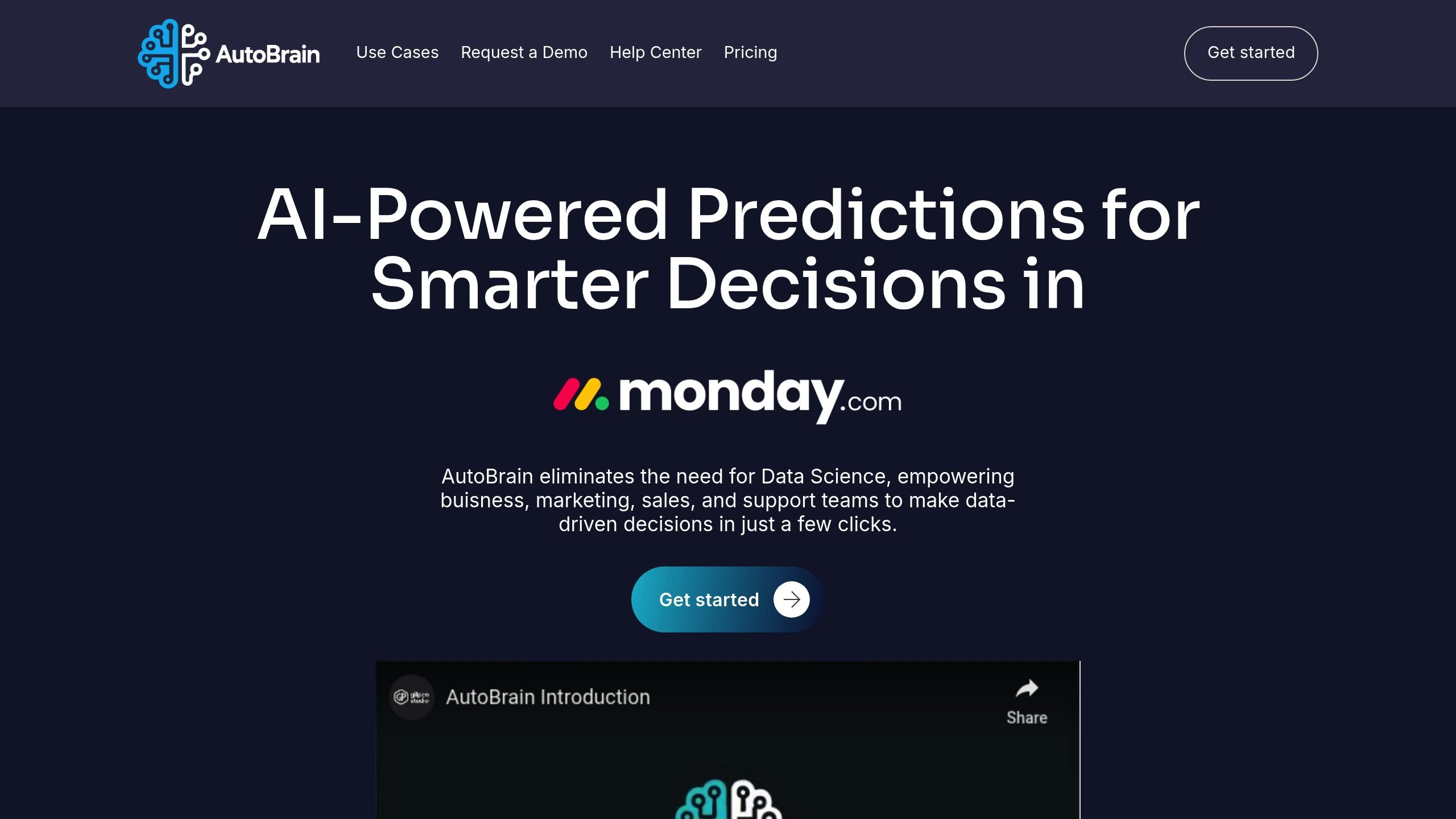Improve customer support response times and efficiency by automating ticket prioritization in monday.com. Save time, reduce costs, and enhance customer satisfaction with these five steps:
- Set Priority Rules: Define critical ticket factors (e.g., system downtime, high-value customers) and organize your monday.com board (Status, Priority Level, Customer Tier).
- Create Routing Workflows: Use monday.com automation to assign tickets based on priority and SLA rules.
- Leverage AI with AutoBrain: Train AutoBrain’s AI with historical data for real-time ticket scoring.
- Customize Priority Rules: Combine AI predictions with manual inputs using formulas for dynamic, weighted priority scores.
- Track & Improve: Monitor resolution time, SLA compliance, and CSAT. Regularly update AI models and workflows.
Why It Matters: Automation cuts response times by 52%, reduces operational costs by up to 40%, and boosts CSAT by 16%. Let's dive in.
Build with Us in monday.com: Support & Ticketing
Step 1: Set Up Ticket Priority Rules
Clear ticket priority rules streamline automation. 70% of consumers choose the first responder [4].
Choose Priority Factors
Focus on impactful factors:
| Priority Factor | Description | Impact Level |
|---|---|---|
| Issue Criticality | System downtime, operations blocking | Highest |
| Customer Value | Contract tier, lifetime value | High |
| Response Time SLA | Contractual response times | High |
| Time Since Creation | How long ticket is open | Medium |
Create monday.com Board Columns
Organize your monday.com board with columns like Status, Priority Level, Customer Tier, Response Time, and Issue Type. Customize permissions and add descriptions. Love Your Melon reduced response times instantly for 25% of tickets with a structured approach [1].
Step 2: Create Ticket Routing Workflows
Set up automated workflows to direct tickets, speeding responses and optimizing resources. Integrate SLA rules for timely responses.
Use monday.com Automation Templates
monday.com’s no-code automation templates simplify routing:
| Trigger Type | Condition Example | Action |
|---|---|---|
| Item Created | Issue Type = Technical | Assign to Tech Support |
| Status Change | Priority = Critical | Notify Lead, move to urgent queue |
| Time-Based | Response Time > 4 hours | Escalate to Senior Support |
To start: Use "item created" trigger for auto-assignment and apply round-robin distribution for even workload.
Implement SLA Time Rules
Set response/resolution targets based on priority. Pause time tracking when awaiting customer responses, define escalation paths, track business hours, and tailor SLA rules to customer segments. AutoBrain's AI can further enhance routing efficiency.
Step 3: Set Up AutoBrain Prediction Models

Use AutoBrain's AI to improve ticket prioritization, building on existing workflows.
Import Historical Data
Import high-quality historical ticket data into AutoBrain, considering completeness, range, diversity, and cleanliness.
| Data Quality Factor | Description | Impact |
|---|---|---|
| Completeness | Includes resolution times, customer segments | Improves accuracy |
| Historical Range | Covers wide timeline | Helps detect patterns |
| Data Cleanliness | Standardized formats | Reduces errors |
Review data for biases per ethical AI practices [5].
Connect AI Scores to Priority Levels
AutoBrain generates scores (0-100) to prioritize tickets. Define score ranges (e.g., Critical: 90–100, High: 70–89). Enable real-time predictions via webhooks. Monitor AI performance and adjust thresholds as needed.
"Generative AI...[gives] us sanity out of that crazy noise of inputs...we can focus on what is really relevant…" [6]
Step 4: Set Custom Priority Rules
Refine ticket prioritization by combining automated insights with manual oversight.
Build Priority Calculation Formulas
Integrate AI predictions with other metrics using monday.com's Formula Column. Example for AI score-based categorization:
IF({AI_Score} >= 90, "Critical", IF({AI_Score} >= 70, "High", IF({AI_Score} >= 40, "Medium", "Low")))For weighted priority, combine factors like AI Score (40%), SLA Status (30%), Customer Tier (20%), Manual Priority (10%). Add conditional logic for business-specific rules, e.g.:
IF({Customer_Tier} = "Enterprise" AND {AI_Score} >= 70, "Critical", IF({SLA_Hours_Left} < 4, "High" , {Base_Priority}))
Set Team Assignment Rules
Assign tickets based on calculated priorities and team workload.
| Priority Level | Team Assignment | Workload Limit |
|---|---|---|
| Critical | Senior Support | 3 tickets |
| High | Advanced Support | 5 tickets |
Set up agent skill profiles, workload thresholds, and automated routing. A luxury travel company boosted efficiency by 20% with similar automation [7]. Monitor and adjust rules as needed.
Step 5: Track and Improve Results
Continuously monitor your automated system. 87% of support teams report rising customer expectations [8], making refinement necessary.
Measure Key Results
Track KPIs like Resolution Time (target 20-30% reduction [9]), SLA Compliance Rate (target 25-30% increase), and CSAT Score. Use a monday.com dashboard for real-time tracking. Howard Kennedy used dashboards to connect goals with daily operations [11].
Update AI Models
Refine AI models with new data. Compare automated results against actual urgencies. Gather new training data (resolution times, priority, CSAT) and retrain models regularly (e.g., monthly for high volume, quarterly for medium). Validate retrained models before rollout [10].
Conclusion: Better Support Through Automation
Automating ticket prioritization with monday.com and AutoBrain helps teams proactively address issues. 71% of consumers prefer companies that respond fastest [2]. Support teams save 45 seconds per ticket with AI triage [13].
| Benefit Category | Impact |
|---|---|
| Response Speed | Faster categorization & routing |
| Team Efficiency | 45s less triage time/ticket [13] |
| Customer Satisfaction | Up to 16% CSAT boost [3] |
| Resource Optimization | 24/7 availability [12] |


